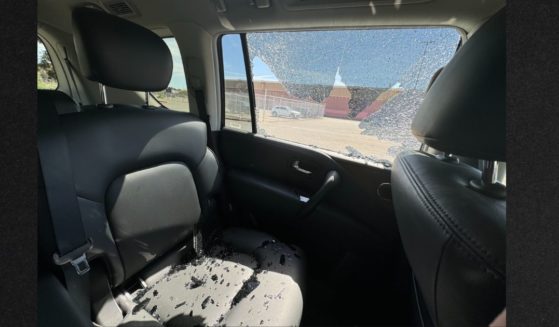Here Is How Florida Government Officials Are Eliminating The Debris Left By Hurricane Ian

Images from the aftermath of Hurricane Ian sent shockwaves across the world. Cities, bridges and entire islands were completely leveled when Ian made landfall as a fierce Category 4 hurricane in southwestern Florida in late September. Now, just over a month after Ian’s landfall, residents are still trying to pick up the pieces, and collection trucks continue to remove piles upon piles of heavy debris. However, the tons of debris that litter the roads and fill people’s homes doesn’t just disappear.
The long, slow and grueling road to recovery includes a plan that was put in place well before Ian became a topic of discussion, and it includes specific details on who handles the debris and where it goes.
CrowderGulf Joint Venture, a disaster recovery company, is in charge of all the debris removal in the city of Fort Myers, Sanibel, Fort Myers Beach, Bonita Springs and the village of Estero and Lee County unincorporated areas.

“Under [the] contract, we’re tasked with the full process of debris management,” Reid Loper, vice president of CrowderGulf, told AccuWeather, explaining that CrowderGulf is in charge of removing construction debris, electronic waste, household hazardous waste, vegetative debris and large appliances like refrigerators, microwaves, AC units and ovens. “Once that debris is collected and hauled, it then goes to what we call debris management sites” or DMS.
Once it arrives at the DMS, which is a temporary storage and processing facility that was planned and pre-approved well before the storm or disaster struck, it is sorted into temporary rows. Loper noted that each type of debris is kept separate from one another because the end destination for each category of debris is different.
Both vegetation and construction debris are lined up into separate rows, which then get fed into “powerful grinders” to be reduced. Ground-up vegetation debris can be reused in many different ways, ranging from mulch to biomass fuel to landfill cover, but ground-up construction debris has to be disposed of in a construction and demolition landfill.

Adam Babich, a Tulane University environmental law professor, explained there are different types of landfills: municipal solid waste landfills and construction and demolition (C&D) landfills. While municipal solid waste landfills have a liner, protecting the potentially hazardous material from getting into the groundwater, C&D types are not federally required to have that liner. Simply put, C&D landfills are only supposed to contain construction and demolition materials, which typically do not cause a threat to the surrounding groundwater.
Even though Lee County has asked residents to separate their debris into four different categories — household garbage, vegetative debris, construction debris and appliances — sometimes things can slip through the cracks. The Federal Emergency Management Agency (FEMA) has contracted debris technical monitors to oversee the temporary disposal sites to ensure no hazardous or unwanted materials are sorted into the wrong category.
Stetson Smith, a civil engineer with the U.S. Army Corps of Engineers from the Vicksburg, Mississippi, district, is acting as a debris technical monitor for FEMA. Smith ensures that no garbage bags or white goods are put into the C&D landfills.

It is crucial to monitor the items going into a C&D landfill because they are not federally required to be lined, meaning if certain items like refrigerators or AC units are inadvertently dumped in the landfill, chemicals from those appliances could seep into the groundwater surrounding a C&D landfill.
“I have nine temporary disposal sites that I’m in charge of to monitor each day,” Smith told AccuWeather National Reporter Jillian Angeline in an interview. “I’ll go out to these sites and just make sure that everything is within FEMA guidelines. Then I’ll write a report on my observations at night and then we’ll send that directly to FEMA.”
Smith said he works closely with CrowderGulf employees to ensure the debris removal process is running smoothly.
“If I have any questions, I have CrowderGulf operation managers’ numbers where I’ll give them a call to see you know, ‘Hey, I have a question about this site, can you answer that for me?'” Smith said. “If I do need a question answered they’ve always been happy to help me.”
As of Monday, more than 1.67 million cubic yards of debris had been collected in Lee County, according to county officials. Overall, CrowderGulf said it will have picked up more than 3 million cubic yards of debris from all of the areas it covers by close of business on Tuesday, Nov. 1.

As for household garbage, the Lee County Solid Waste Department has resumed its daily pickup schedule. Babich explained this garbage will go to a municipal solid waste landfill, which is more tightly controlled “because a lot of that waste is actually quite dangerous.”
According to Babich, the surrounding groundwater isn’t affected by any potentially dangerous materials that are put into municipal solid waste landfills because they are lined. He notes that because of the liner, these landfills tend to be more expensive to dispose of waste.
As for larger debris, like boats, Florida Gov. Ron DeSantis said last week that multiple state agencies are working together to identify and remove vessels and other debris from Lee County waterways.
Additional reporting by Jillian Angeline.
Produced in association with AccuWeather.
The Western Journal has not reviewed this story prior to publication. Therefore, it may not meet our normal editorial standards. It is provided to our readers as a service from The Western Journal.
Truth and Accuracy
We are committed to truth and accuracy in all of our journalism. Read our editorial standards.












